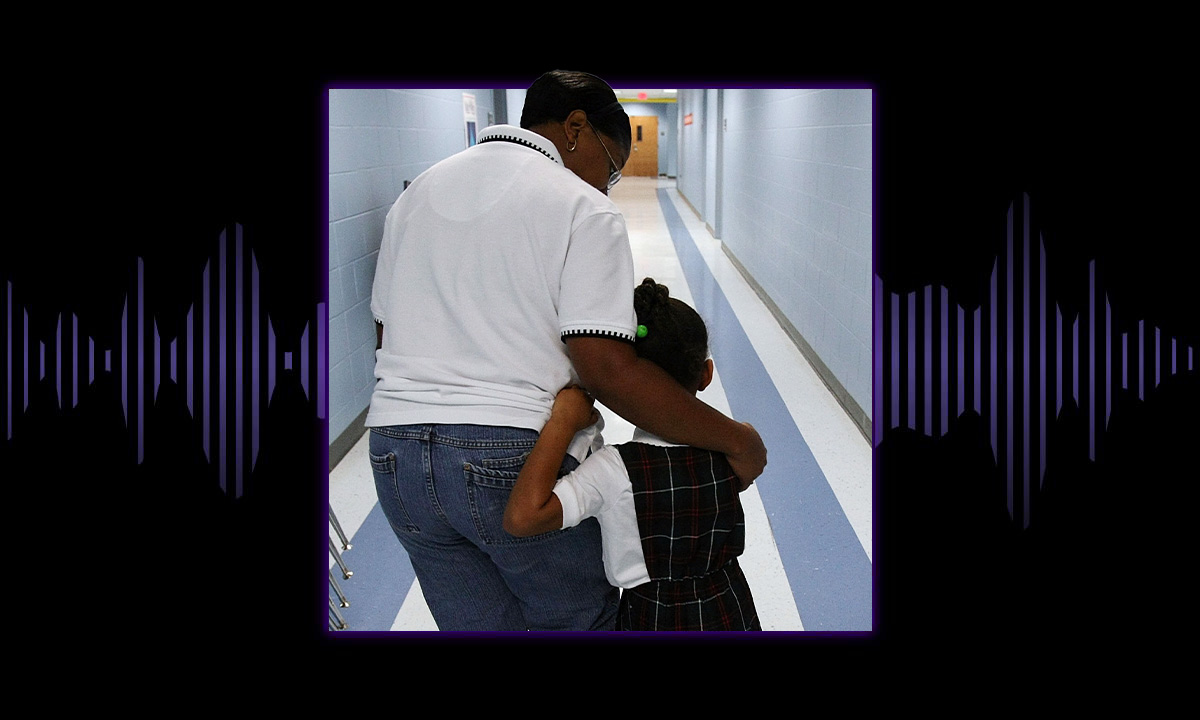Podcast: 7,000 New Orleans Teachers Instantly Lost Their Jobs After Hurricane Katrina. Here’s What Happened Next
The new episode of ‘Where the Schools Went’ spotlights how the redesigning of the school system sparked profound changes to the NOLA teaching force.

Get stories like this delivered straight to your inbox. Sign up for The 74 Newsletter
This is part of a series covering the 20th anniversary of Hurricane Katrina, its effects, and the recovery of New Orleans’ schools. Read all our coverage and essays here.
The 74 is partnering with The Branch in promoting Where the Schools Went, a limited-run podcast series that revisits the sweeping changes to New Orleans’ public schools after Hurricane Katrina came ashore 20 years ago this month. Listen to the third episode below and subscribe here.
Before Hurricane Katrina, teaching in New Orleans was more than a job. It was a pathway to the middle class; a profession led by veteran Black educators with deep roots in the city and protected by one of the South’s most powerful teachers’ unions. The United Teachers of New Orleans had fought for higher pay, stronger benefits, and job security. But those protections also made it hard to remove ineffective teachers and left principals with little control over who worked in their buildings.
After the storm, the entire teaching force was dismissed. More than 7,000 educators lost their jobs in a single stroke, many learning the news from the evening broadcast.
The layoffs wiped out decades of experience and dealt a heavy blow to the city’s Black middle class. Some of those educators came back, determined to reopen their schools under extraordinary conditions. At Warren Easton Charter High School, staff taught on the second and third floors while the first floor remained under water. Still, the majority of dismissed educators never taught in the city again.
Into the gap came a wave of new recruits, many in their twenties, many white, and often from outside Louisiana. Programs like Teach For America promised energy and results. Principals could now hire quickly, replace teachers just as fast, and push for immediate improvement.
Some schools thrived under the new flexibility. Others struggled with constant turnover and cultural gaps between teachers and the communities they served.
Today, the city’s teaching force is more diverse and more local than it was in the years after the storm. Yet a new challenge looms: how to attract and keep enough teachers willing to do the hard, often unglamorous work of helping students succeed. In the third episode of Where the Schools Went, you will hear from veteran educators, school leaders, and newcomers about how the city rebuilt its classrooms, what was gained, what was lost, and why the question of who teaches still shapes the future of its schools.
Listen to episode three above, and watch for the next chapter debuting Sep. 2.
Where the Schools Went is a five-part podcast series from The Branch, produced in partnership with The 74 and MeidasTouch. Listen at Apple podcasts or stream on Spotify.
Get stories like these delivered straight to your inbox. Sign up for The 74 Newsletter

;)
